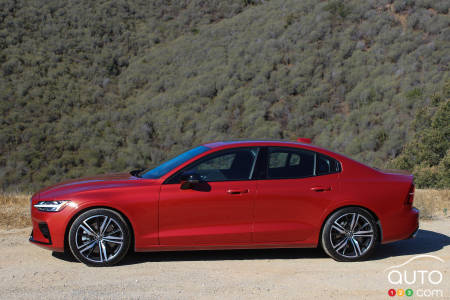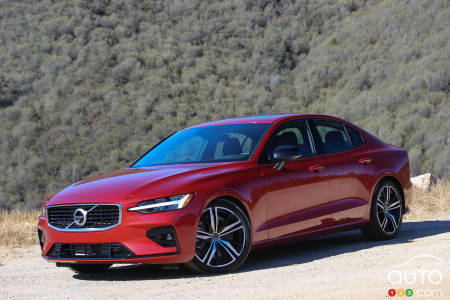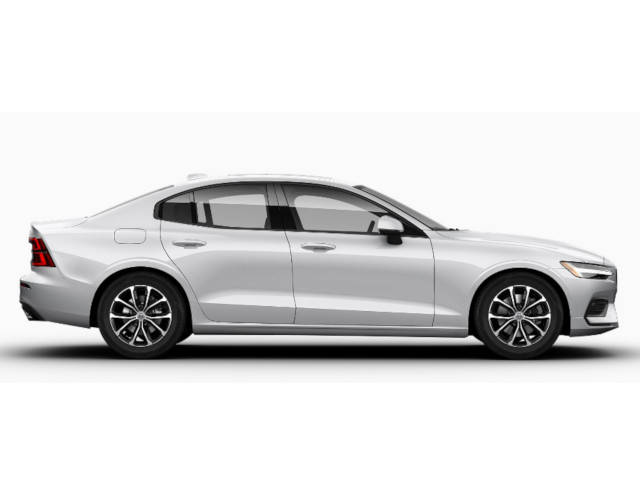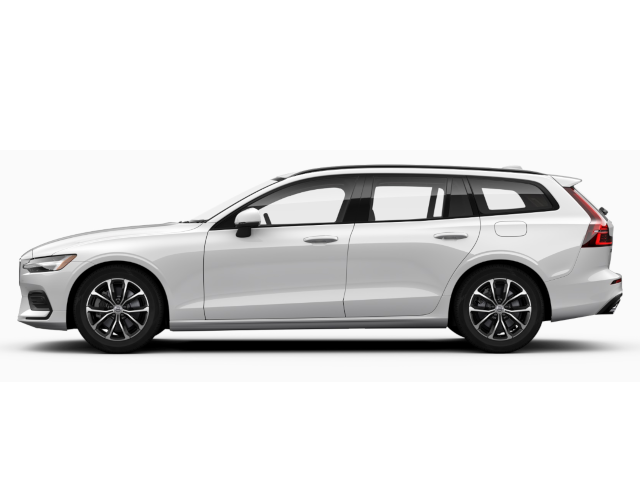Santa Monica, CA -- For 2019, the Volvo S60/V60 twins (“S” = sedan, “V” = wagon. Historically – and perhaps surprisingly – the latter has been the bigger seller in Canada) have been re-engineered from the ground up; they now ride on Volvo’s Scalable Platform Architecture (SPA) platform, making them the last models in Volvo’s portfolio to get that treatment. This tandem represents the first Volvo models, meanwhile, to be built in North America at the company’s new 1,600-acre, $1.1 billion South Carolina plant.
The duo also been completely re-styled to bring it into lockstep with the rest of the range. That means the addition of Thor’s Hammer headlights, new wheels, aggressive yet modern lines and the latest take on Volvo’s interiors, which have been impressing me and my colleagues ever since the “new” Volvo got underway with the launch of the XC90 SUV in 2015.
A good thing going on
Every time a new Volvo arrives, I’m waiting to not like it as much as the previous. Every car Volvo’s been releasing lately is so sharp-looking, that I can’t ever imagine the next one looking better.
And yet, just like it was when I tested the XC40 earlier this year, and the XC60 before that and so on, this latest Volvo has floored me yet again with its looks. When you’ve honed your styling as well as Volvo has, it helps ensure that the next one is just as good – or better – than the last.
With the S60, it starts with the stance; it’s lower than previous, and while it’s a little narrower than previous, it doesn’t look it. It’s far more athletic and purposeful, no longer seeming a bit of a shrinking violet when compared to the best Germany has to offer. The effect is brought along even further if you opt for the R-Design or Polestar Engineered versions; both get even more special wheel styles, all two-toned and edgy. The top-spec T8 Polestar Engineered – more on the weird nomenclature in a moment – gets 19-inch wheels as opposed to the 18s on the R Design (base Momentum models get 17s) and gold-coloured Brembo brake calipers pinching larger rotors. The R-Design rides lower, while the Polestar Engineered model gets manually adjustable Ohlins dampers – yes, that’s a Swedish company, too – modified by turning a dial painted to match the brake calipers. The T8 Polestar, meanwhile, represents one of the first models to come out of Volvo’s acquisition of the Polestar brand, which used to be a separate entity. Hence, “Polestar Engineered”.

Want more? Look inside
For all the exterior flare given to the new car, the interior follows the Volvo trend of popping off the canvas as soon as you swing open the solid door. The colour choices are spot on, it’s tough to find a misused material or panel gap throughout…and then there are the speakers.
There are two sound systems; a 14-speaker harman / kardon system comes as standard, while a 15-speaker Bowers & Wilkins 1,100 watt number with gorgeous metallic speakers is a $1,200 option on T5 models, and a $3,750 option on T6 R-Design and Inscription models. The yellow Kevlar cones they hide are visually scrumptious, and the sound they emit is great and can be set to three styles: Individual Stage, Concert Hall and Studio. The changes they make to your favorite tracks can be detected by even the most tone-deaf of audiophiles. It’s all controlled, of course, by the standard 9-inch Sensus Connect touchscreen.
Apple CarPlay and Android Auto are standard, but your device’s mirror image will never take up the whole screen. So, if you want to use some of the native system’s apps even while your device is attached, you can. The main attraction here for me is the ability to use Volvo’s navigation system so I don’t have to use my phone’s data for directions.
Safety features? In a Volvo?
Of course, if we’re going to talk tech we’d be remiss not to mention safety features – especially considering that these are Volvos, and we all know how well-known Volvos are for their safety. Lane departure warning and back-up cam come as standard, but the real nifty aid is City Safe collision mitigation, which actually detects what’s going on around you – pedestrians, cyclists, poodles – and will automatically apply brakes up to 50% if the driver doesn’t react.
If “more autonomy” is the order of the day, then Pilot Assist can be added as part of the $1,500 Convenience Package, available on any S60/V60. Essentially, Pilot Assist is a semi-autonomous system that will keep you centred in your lane, maintain the distance between you and the car ahead and step in early if the camera senses that the edges of the road are coming up too quickly. We tried the system both in free-flowing and stop-and-go traffic and as long as you keep your hands on the wheel, it works as advertised. Leave them off, however, and the system will ask you to put them back on.
At either end of the trim spectrum, Volvo offers a special interior treatment. Momentum models are available with a pretty wild tartan interior option, while the Polestar cars get standard fitment of special sports seats and yellow seatbelts – you know, to match the brake calipers and all. Inscription models, meanwhile, get real open-pore wood inserts, the likes of which have worked oh-so-well in the rest of the lineup over the past few years.
Comfort-wise, the “60” twins are great for front-seat passengers. While none of the seat choices are quite as chair-like as what’s found in some of Volvo’s larger models, they’re still supportive and comfortable. You can get massaging front seats on the Inscription model and while it’s no big deal that that’s the only place you can get them, the fact you can only get ventilated front seats on the Inscription trim is a little tougher to forgive. I’m thinking that at $52 grand for the R-Design trim, at least the option to add ventilated seats would have been nice.
While the back seats aren’t quite as impressive – they’re quite firm and flat, to the point I found myself sliding back and forth more than I would have liked – you do get some nice headroom back there even with a full-length moonroof. Overall, the cabin is an airy place to be, especially if we’re talking about the V60 wagon. What’s a little strange, however, is how bouncy I found it in the back seat. These were pre-production models so perhaps things will be smoothed out once production models begin to arrive. Let’s hope that’s the case.
Three times four
There are four available non-Polestar trims – T5 FWD Momentum ($42,400/$43,900 S60/V60), T6 AWD Momentum ($47,400/$48,900), R-Design ($52,400, S60 only) and Inscription ($55,400, S60 only) and every S60/V60 gets the same 2.0L turbo four. R-Design and Inscription trims add a supercharger and the Polestar car gets an EV motor when it arrives later next year (no pricing has been announced), turning it into a plug-in hybrid. Power figures start at 250 hp and 258 lb-ft for the T5 Momentum, 316 hp and 295 lb-ft for the T6 models (you can get the T6 with all trims) and all the way to 416 hp and 495 lb-ft of combined power for the T8. V60 R-Design and Polestar variants will follow later next year.
We drove a Momentum, R-Design and Polestar and of all of them, it was actually the Polestar that sounded the best. The engine sound in the R-Design is electronically augmented, but it ends up sounding a bit like it’s trying too hard. The T8, on the other hand, sounds more like a V6 than a turbo-4 – that is to say slightly metallic and warbly – which is a fine way of covering up any whine from the EV powertrain. Top tip: there isn’t one, unless you’re in full-EV mode. Which, as it happens, can be locked out if you happen to be on an open stretch of road, and would rather save your EV power until you need it in traffic later. Volvo says that in perfect conditions, you can expect 31 km of pure EV travel.
Those special dampers can only do so much, though. No official figures have been released but the T8 feels the much heavier car and body roll is much more present than it is in the R-Design. It’s a fantastic, powerful highway cruiser, though, which is likely what it will mostly be used for anyway. I do hope the T8’s brake feel gets improved closer to production, however; as it stands right now, there’s very little play in the brake pedal. Before you know it, you’re using about 80% of stopping power and straining against the belts.
For its part, the R-Design model is actually quite a joy through the bends. We had the chance to take it over some nice, windy stuff through Mullholland Drive and the surrounding canyon roads and it was a thrilling ride. Turn-in is crisp, especially in Dynamic mode which also modifies throttle and transmission response. I found myself delving deeper and deeper into corners, leaning ever more heavily on the stiff-walled Continental performance tires. The car is so planted and confidence-inspiring that you can’t help yourself, really. This is proper sports sedan stuff.
Equally appealing is the response of the standard 8-speed transmission; R-Design models get a pair of paddle shifters, and I made plenty of use of these during my run. It’s a car that’s way more comfortable on the limit than its humble beginnings would have you believe.
Time to take things more seriously
For me, the R-Design was the superstar of the event as it did the best job of showing that this new 60 has what it takes to compete with the behemoths from Audi, BMW, Mercedes and even Lexus. Tons of poise, gorgeous looks both inside and out and one of the best interiors in the segment. And, though some will bemoan the lack of a V6 engine, there’s enough power to have you feeling like you’re piloting a sports sedan or wagon of the highest order. The wagon’s especially unique as there just aren’t that many vehicles of this type available in Canada these days, and if nothing else, the wagon option is a unique alternative in this day of ever-expanding CUV and SUV lineups.
Road Tests and Reviews










